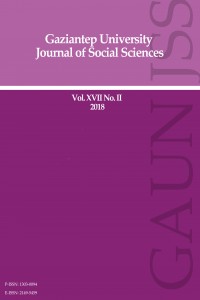The Trauma of Time in Shakespeare’s The Winter’s Tale and Winterson’s The Gap of Time
Abstract
William
Shakespeare’s The Winter’s Tale and
its rewriting in the novel form by Jeanette Winterson both handle the concept
of time traumatically. In the play, the traumatic events culminating into
tragedy is linked to the second part of the play, after an interval of 16 years,
with the help of the emblematic character “Time” that winds the play towards a seemingly happy
ending. In the novel, on the other hand, the narrator takes up the role of Time
and changes the setting in time and space. The change in temporality not only
disrupts the flow of time signifying trauma, but also leads way to an otherwise
impossible reconciliation entailing the trauma of forced compromise without a
proper denouement. Trauma is attempted to be treated in
Shakespeare’s The Winter’s Tale
through miracle and forgiveness and in Winterson’s novel through forgiveness
and in the belief that the next generation will not make the same mistakes as
the old one. This paper evaluates the trauma of the gap of time in these two
works through Cathy Caruth’s theory on the effects of forgetting the past trauma
and Thomas de Quincey’s concept of being carried to the normal flow of time in
Shakespearean dramatic action.
Keywords
References
- Bevington, David (2009). The Winter’s Tale. In The necessary Shakespeare. Third Edition. David Bevington (Ed). New York: Pearson Longman. pp. 802-804.
- Caruth Cathy (1996). Unclaimed experience: Trauma, narrative, and history. Baltimore and London: Johns Hopkins University Press.
- De Quincey, Thomas (1823). On the knocking at the Gate in Macbeth. In The Museum of Foreign Literature. Philadelphia: E. Littell.
- Shakespeare, William (2010). The Winter’s Tale. John Pitcher (Ed). London: Bloomsbury.
- Williams, Tennessee (1999). “The Catastrophe of success.” The Glass Menagerie. New York: New Directions Books.
- Winterson, Jeanette (2016). The Gap of Time: The Winter’s Tale Retold. London: Vintage.
- Young, James E. (1993). Texture of memory. New Haven, CT: Yale University Press.
Shakespeare’in The Winter’s Tale ve Winterson’ın The Gap of Time Eserlerinde Zamanın Travması
Abstract
William
Shakespeare’in The Winter’s Tale
oyunu ve bu oyunun roman türünde yeniden yazımı olan Jeannette Winterson’ın The Gap of Time’ı zaman kavramını
travmatik olarak işlemektedirler. Shakespeare ‘in oyununda, trajediye yol açan
travmatik olaylar 16 yıllık bir aradan sonra “Zaman” karakterinin yardımıyla görünüşte mutlu bir
sona doğru yöneltilir. Winterson’ın romanında ise anlatıcı Zaman karakterinin
rolünü üstlenerek yer ve zaman değiştirir. Bu zaman değişikliği hem
travmanın sonucu zamanın akışını bozarken hem de aslında başka
türlü mümkün olmayacak bir uzlaşmayı olanaklı kılarak tam bir
çözümleme olmadan, zoraki bir uzlaşmanın getirdiği travmaya sebep olmaktadır. Travma
Shakespeare’in The Winter’s Tale
oyununda mucize ve affetme yoluyla, Winterson’ın romanında ise affetme ve yeni
kuşağın eski neslin hatalarını tekrar etmeyeceğine olan inanç ile geçirilmeye
çalışılır. Bu makalede, bu iki eserdeki zaman boşluğunun travması Cathy
Caruth’un travmatik olanı geçiştirmenin etkisi teorisi ve
Thomas de Quincey’nin Shakespeare’in dramatik eyleminde normal zaman akışına
taşınma kavramı doğrultusunda incelemektedir.
Keywords
References
- Bevington, David (2009). The Winter’s Tale. In The necessary Shakespeare. Third Edition. David Bevington (Ed). New York: Pearson Longman. pp. 802-804.
- Caruth Cathy (1996). Unclaimed experience: Trauma, narrative, and history. Baltimore and London: Johns Hopkins University Press.
- De Quincey, Thomas (1823). On the knocking at the Gate in Macbeth. In The Museum of Foreign Literature. Philadelphia: E. Littell.
- Shakespeare, William (2010). The Winter’s Tale. John Pitcher (Ed). London: Bloomsbury.
- Williams, Tennessee (1999). “The Catastrophe of success.” The Glass Menagerie. New York: New Directions Books.
- Winterson, Jeanette (2016). The Gap of Time: The Winter’s Tale Retold. London: Vintage.
- Young, James E. (1993). Texture of memory. New Haven, CT: Yale University Press.
Details
| Primary Language | English |
|---|---|
| Subjects | Creative Arts and Writing |
| Journal Section | English Language and Literature |
| Authors | |
| Publication Date | April 1, 2018 |
| Submission Date | February 20, 2018 |
| Acceptance Date | March 21, 2018 |
| Published in Issue | Year 2018 Volume: 17 Issue: 2 |

